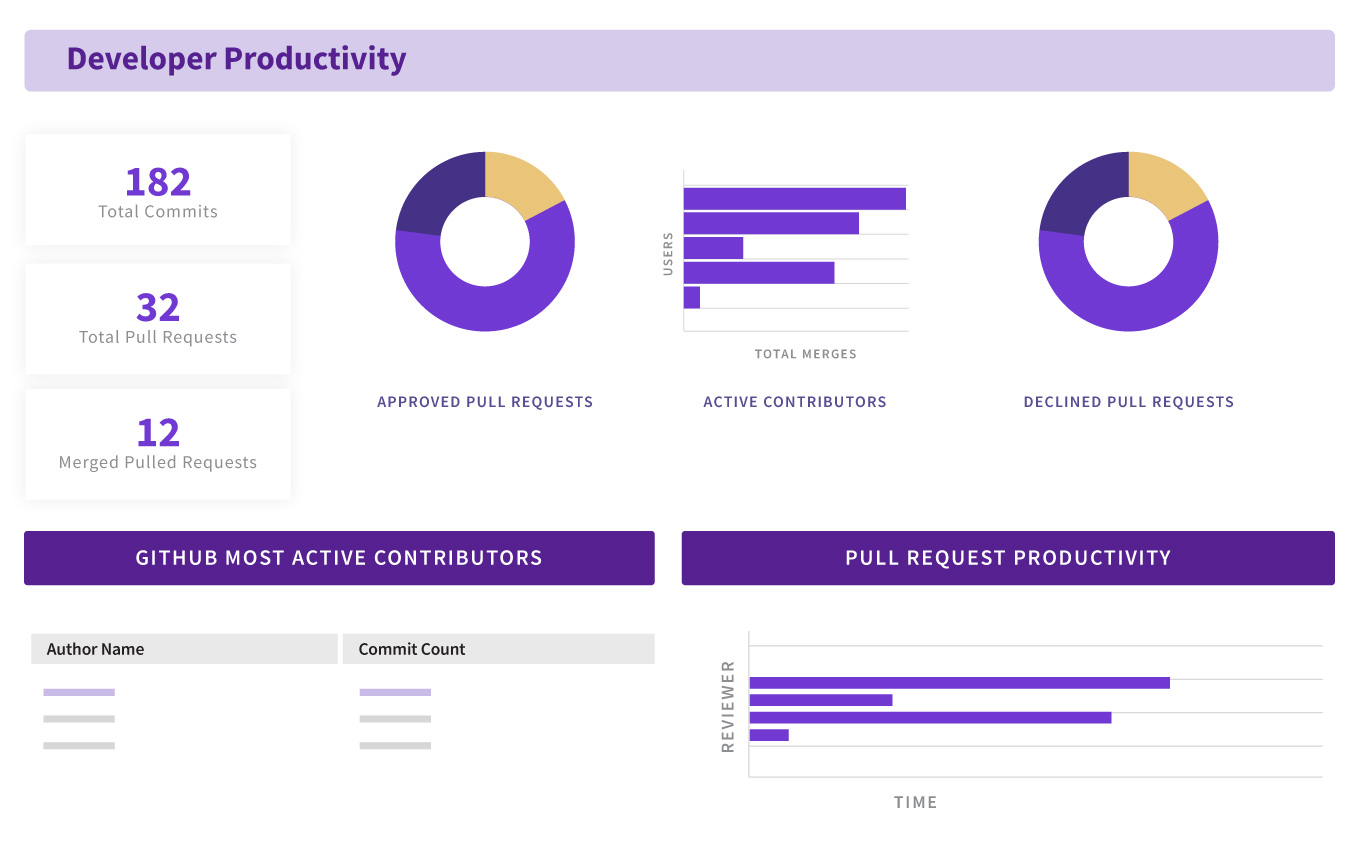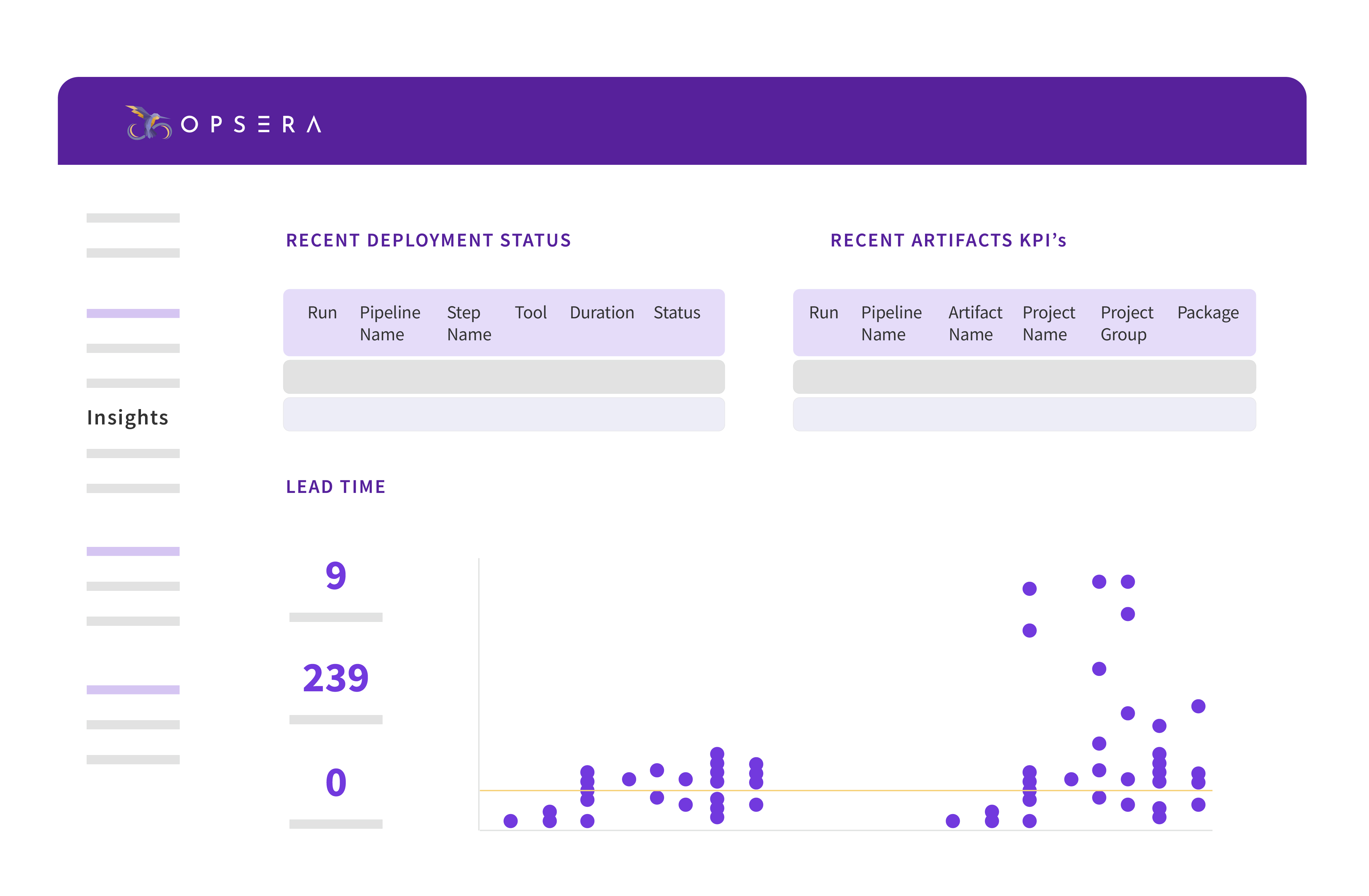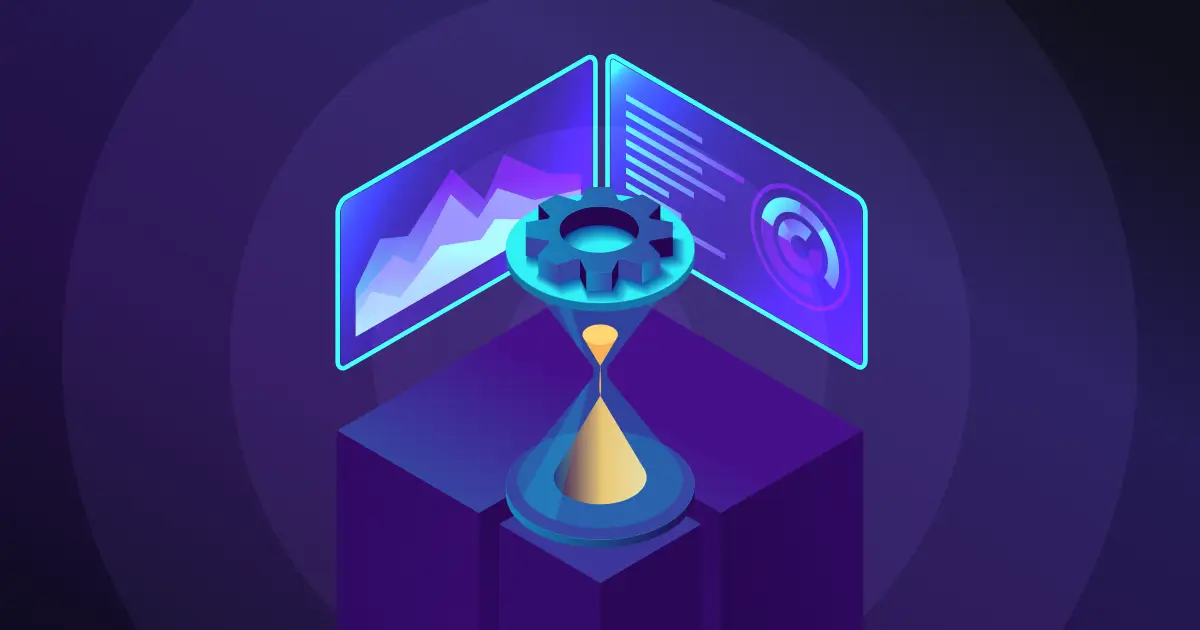Developer productivity is a crucial metric to review the quality of code and levels of developer burnout. This allows managers to manage developers and ensure that their work is on par, and safeguard retention of the workforce.
What is Developer Productivity?
Developer productivity refers to the degree of productivity of a developer during a specific time or based on some specific criteria. An organization usually designs objectives or metrics to track and determine goals to accomplish a baseline of what is acceptable to measure developer productivity. In other words, developer productivity is a measure of a team’s, not an individual’s, ability to efficiently ship superior quality code that delivers business value.
However, a word of caution that evaluating developer productivity based only on specific metrics is unhealthy and also risky. According to Nicole Forsgren, one of the researchers who created the SPACE framework, it is a myth that productivity is all about developer activity, such as lines of code or number of commits, and it threatens the developer happiness.
Developer productivity should include both qualitative and quantitative datasets. The SPACE framework is considered as a more holistic approach to measuring developer productivity. However, developer happiness and productivity aren’t mutually exclusive and, hence, you should consider other metrics apart from the frameworks aforementioned.

How to Measure Developer Productivity?
Developer productivity is difficult to measure, but it is a critical factor to the success of any organization that is into software development. Much of the promise of the agile methodology is to empower developers and make them more effective at doing their jobs.
There are two popular methods to measure developer productivity: (1) the SPACE Framework and (2) the OKR Framework.
The SPACE Framework: The SPACE framework for developer productivity measures performance based on five pillars:
1. Satisfaction & Well-being
2. Performance
3. Activity
4. Communication & Collaboration
5. Efficiency.
No single metric can truly measure developer productivity. The authors of the SPACE framework have understood this well and, hence, have created a multi-dimensional measure that blends all these concepts.
The SPACE framework defines multiple data points to swiftly gauge not only developer productivity, but also the environment of the developer. SPACE was created to capture different dimensions of developer productivity and disprove misconceptions about it, such as the belief that productivity is measured by activity volume, tools, or individual performance. The framework proposes many definite measures for each of them that apply at different levels, including individual, team or group, and system.
1. Satisfaction & Well-being
SPACE framework focuses not only on building and enhancing the developer experience, but also on fostering a healthy team culture. Developer satisfaction and productivity are highly interlinked, and a positive work environment ensures the sustenance of high productivity. On the contrary, extreme workplace stress causes burnout and impairs productivity.
Developer satisfaction refers to the level of satisfaction of developers with their team, work, tools, or culture. Well-being refers to the degree of their happiness and health, along with the impact of the work on their health and happiness. Measuring satisfaction and well-being helps in understanding productivity and predicting it. For instance, as productivity and contentment are interlinked, it’s possible that satisfaction can operate as a leading indicator of productivity; a decline in satisfaction and engagement could portend imminent burnout and lower output.
2. Performance: Outcomes Vs. Output
In the SPACE framework, measuring performance is related more to the outcome than to the output. In most organizations, software is written by teams, not individuals, and hence, performance is frequently measured in terms of outcomes than output. When we consider the metric of counting the number of releases, a more relevant question than whether a release is made on time is whether the goals of the release were accomplished. Apparently, the outcome is more pertinent to the long-term health of the project.
It is difficult to measure software developer performance since it is not natural to link individual contributions to product outcomes. Even though a developer’s contribution can be correlated to business outcomes, it is not always indicative of performance since the developer may have been allocated a less significant assignment rather than having the liberty to opt for a more significant one. Moreover, the software is often the sum of several contributions of developers, making the measuring of effectiveness of a given developer even more difficult.
3. Activity
The SPACE framework comprises the idea of an activity that represents a primary unit of work, such as committing a block of code. Activities can be characterized and measured by a set of code metrics and may report only a part of the story, and are extremely contextual. However, code metrics are significant in measuring progress and must be considered.
When measured judiciously, developer activity can provide valuable but limited information about developer productivity, engineering systems, and team efficacy. Developers’ activity is challenging to estimate or evaluate due to the diverse and different activities they do. In fact, measuring and quantifying all aspects of developer activity across engineering systems and environments is almost impossible.
However, a well-designed engineering system can help capture activity metrics throughout the software development life cycle and the quantification of developer activity at scale.
4. Communication & Collaboration
Effective collaboration requires meaningful and effective communication, apart from a range of skills that are needed to manage all aspects of the project. An audit of updated skills and the pertinent network metrics to show which team members are connected are valuable documents for measuring and promoting collaboration.
High transparency and knowledge of team member’s activities and task priorities are important for integration and successful contribution of team members’ work. Moreover, the manner in which information flows smoothly within and among teams determines the accessibility and visibility of documentation required for effective alignment and integration of work. Teams embracing a diverse and inclusive membership perform better. Highly productive teams focus on relevant challenges, have greater probability in generating new ideas, and choose the best solution from a wide range of options.
5. Efficiency
Efficiency is the key factor driving several tools, tips, and frameworks. Completing a project on time and budget is crucial in many cases, yet irrespective of the industry, the price of doing so cannot be an untenable project that is unscalable. An efficient process brings the project to fruition, through a well-completed and optimized series of steps. Efficiency is about reducing the inactivity throughout the process, such as reducing the number of teams involved and accounting for lost time due to such overhead.
The ultimate goal for SPACE is to evolve a codebase that is of superior quality with low technical debt – the amount of additional work that must be done when code is implemented, adapted, or patched – and more maintainable code, leading to a higher return on investment. This multifaceted approach adds critical aspects of accountability.
2. The Objectives & Key Results (OKR) Framework: The OKR framework is for goal management that works on the concept of Objectives and Key Results. Primarily, each OKR consists of an objective, which implies a clear direction, and the key results, which implies the measure indicating progress toward achievement of the objective. OKRs assist developers in focusing on the task at hand by splitting problems into workable objectives and adding transparency by distinctly indicating what represents success. This is a very simple and smart approach. You measure your actual goal, but there is a definite price for that; it is the compulsion to define new objectives and measurements for every distinct part of the project, sometimes even by repetition. If new objectives are not determined, or the measurements are not updated along the project lifetime, we get unstable measurements.
5 Ways to Improve Developer Productivity
It is vital that your employees feel they are a valued individual rather than a mere opinion in the corporate setup. You can improve overall productivity in several ways, such as by working in sprints, reducing distractions, providing continuous education, determining individual goals, reducing mean time to recovery, etc. The following are some of the ways to improve developer productivity:
1. Automate Your Workflow: Software developers usually have enough tedious and repetitive tasks that waste their valuable time. Tasks such as generating API documentation, garnering data, or generating reports can be automated, save time and effort for developers and also increase their productivity.
Similarly, according to Vlad Giverts, Co-founder of Warmspace, if dealing with bugs takes away more than 20% of your engineering time, then it indicates you have a quality/architecture problem that diminishes your productivity. Tools such as ‘Shake’ can significantly cut down the time developers spend on fixing bugs as it automates bug reporting so that developers get detailed reports from users in a jiffy. When every critical piece of information developers require for fixing a bug is at their disposal, they can save plenty of time. It provides developers with additional time to focus on other tasks and, therefore, helps them stay more productive.
2. Identify & Eliminate Obstacles to Productivity: Identifying and eliminating barriers to productivity is as critical as evaluation of productivity. The development team can confront obstacles from different sources. Multitasking can be a severe obstacle to productivity. When developers need to switch between different tasks, they feel more strained due to continuous pressure, which leads to compromised performance. Moreover, improper communication among team members can become a productivity barrier. It can even lead to frequent interruptions and delays in task completion, impacting the organization’s overall outcome. To eliminate these obstacles, you first have to identify them and recognize their origins. This will help in better enhancement of developer productivity.
3. Communicate Effectively: Regular communication with your developers is a critical factor in boosting their productivity. Healthy communication can help your team to freely discuss their needs, issues, and ideas. They should have an opportunity to do so, else frustration and unhappiness can build up, which is highly detrimental for productivity. You can provide them with opportunities through frequent one-on-one meetings with developers.
4. Integrate Continuously: Many developers use CI/CD to streamline their software releases so that customers get updates swifter. It can help enhance productivity by ensuring quality production, designing smaller, more precise, and less risky releases, delivering software swifter and more reliably, automating bug identification and fixation, and minimizing manual testing time.
5. Minimize Distractions: Distractions can significantly impact the work process. According to data presented by Gloria Mark, it takes, on an average, about 25 minutes to re-focus on work after an interruption. To ensure your developers have minimal distractions, you should eliminate any work that is not strictly related to development. This includes reducing the number of redundant staff meetings that can affect their workflow.
You should provide developers with a distraction-free environment. For instance, if your developers lack sound and visual privacy, and are distracted by the noise of their surroundings, then you should provide them sound-proof pods that provide privacy. Alternatively, if your developers have decent working conditions, but the distractions arise from their computers, then software such as ‘Cold Turkey,’ should be provided, which blocks websites, games, and apps to boost productivity and ensures better focus on work. You should constantly work with your developers to significantly reduce the number of distractions they face daily, so that their productivity drastically improves.
Improve DevOps Productivity with KPIs & Improved Visibility with Opsera’s Insights Solution
Opsera’s Continuous Orchestration platform for next-gen DevOps enables choice, automation, and intelligence across the entire software development life cycle. It offers simple, self-service toolchain integrations, drag-and-drop pipelines, and consolidated insights. Opsera provides DevOps teams the flexibility to choose the tools they want to use, acquire enhanced efficacy, while enjoying unmatched visibility.
With Opsera’s Unified Insights solution, silos are a thing of the past. Our Unified Insights Solution merges telemetry from all your DevOps tools to enable you to view your total pipeline end-to-end. You can source, build, configure, test and secure, deploy, monitor and collaborate. It also helps improve DevOps performance and allows everyone, including DevOps leaders, to gain visibility into the entire toolchain. Our Insights solution combines software delivery analytics across your CI/CD process into a single and consolidated view.
Opsera’s Unified Insights Solution provides persona-based dashboards targeting vertical roles, including developers, managers, and executives. Moreover, our solution simplifies contextualized logs across all your platforms. It helps you collaborate for continuous improvement, get feedback loops in real-time using ITSM tools, and break down silos with unified visibility across your entire SDLC. You not only get detailed visibility across all Github actions, but also contextualized and correlated KPI data. Our solution offers more than 85 KPIs across your entire SDLC, providing you better awareness of all tools, personnel, and situations. It helps you troubleshoot and fix faster and minimizes your Mean Time to Repair (MTTR), Mean Time Between Failures (MTBF), and Mean Time to Acknowledge (MTTA).





